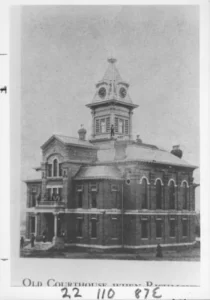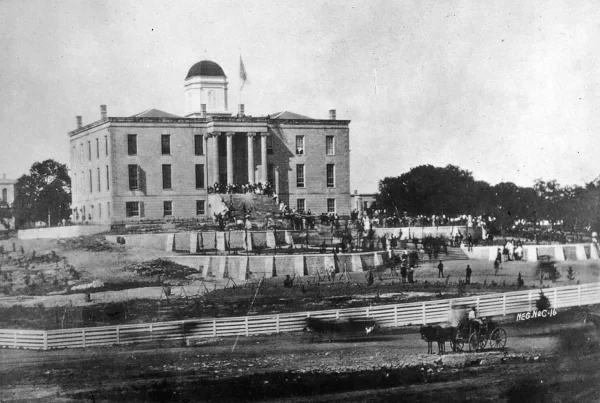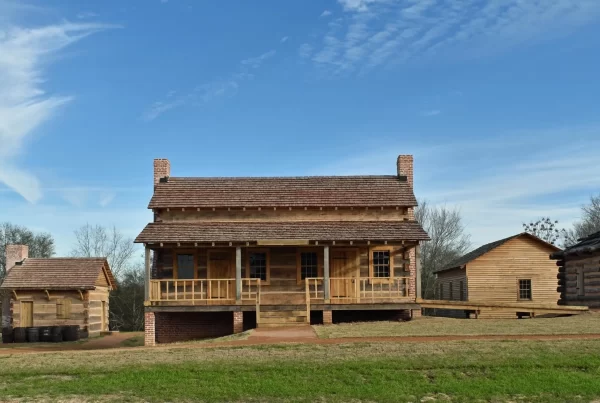In a violent coup in 1889, the ‘Jaybird Democrats’ overthrew a biracial governing coalition in Fort Bend County, Texas, ending more than a decade of Black political influence in the region.
Origins of Woodpecker Control
Following the end of Reconstruction in 1876, Fort Bend County—located just southwest of Houston—became one of several counties in Texas where Black political participation remained significant. A coalition of Black voters, Republican leaders, and a small group of allied White officeholders managed to hold local control well into the 1880s, a rare continuity in a state rapidly reasserting White Democratic dominance.
This coalition, often disparagingly labeled “Woodpeckers” by their opponents, drew strength from the legacy of Union victory and federal Reconstruction. Black residents made up a majority of Fort Bend County’s population, and their electoral clout allowed them to elect sheriffs, commissioners, and other officials. Although White Democrats dominated statewide politics, in Fort Bend, the county government reflected the biracial alliance.
But to White Democrats calling themselves “Jaybirds,” this arrangement was intolerable. They regarded the Woodpeckers as corrupt, incompetent, and illegitimate—a lingering symbol of federal imposition. By the mid-1880s, the Jaybirds were organizing in earnest to oust the coalition through any means necessary.
The Rise of the Jaybirds
The Jaybird Democratic Association was founded in 1887 as an all-White political club committed to ending what its members saw as Republican misrule. Its goal was not simply to compete in elections but to displace Black and Republican influence altogether from the political process.

The tension between the Jaybirds and the Woodpecker-led county government simmered for years, but it came to a head in 1889. That summer, the Democratic primary for county offices—nominally open to all—was effectively closed to Woodpecker candidates. In response, the Woodpeckers ran their own independent ticket for the general election.
Violence soon followed. On August 2, 1889, an armed confrontation between the factions broke out in Richmond, the county seat. Jaybird loyalists opened fire on several Woodpecker-aligned officials. One of the most prominent targets, Sheriff Jim Garvey, was shot and killed in broad daylight. Another county leader, attorney W.T. Eldridge (a Jaybird), took part in the violence himself and would later become a dominant figure in the county’s political and economic life.
By the end of the day, five men had been killed, and the Woodpecker government was effectively deposed. Jaybird forces occupied the county courthouse and declared a provisional government of their own.
State Intervention and Aftermath
Faced with open rebellion and civil disorder, Governor Lawrence Sullivan “Sul” Ross—a former Confederate general and Democratic governor—sent Texas Rangers and militia to restore order in Fort Bend County. Yet his administration walked a political tightrope. While Ross condemned mob violence, he was sympathetic to the Jaybirds’ underlying political grievances and wary of appearing to support Black-led government.

The governor’s primary concern was reestablishing stability, not restoring the previous officeholders. His compromise solution was the formation of a new governing board, called the “peace committee,” comprised largely of Jaybird-aligned figures. Though technically appointed to oversee elections and restore legal order, the committee functioned as a backdoor mechanism to install Jaybird rule.
In 1890, the Texas Legislature passed the “Jaybird Primary Association Law,” which legalized the Jaybirds’ control over Democratic primaries in Fort Bend County. This allowed them to exclude Black voters entirely, as the primary system was considered a private affair not subject to constitutional protections. The general election became a mere formality; whoever won the White primary would hold office.
No Republican or Black official would win county office again for over 70 years.
Legacy of Suppression
The Jaybird–Woodpecker War marked one of the final and most violent transitions from biracial Reconstruction-era government to Jim Crow control in Texas. It was not simply a matter of political competition turning violent—it was a deliberate and ultimately successful attempt to dismantle a multiracial governing structure through both extralegal force and post hoc legalization.
The events in Fort Bend County paralleled other suppressive tactics across the South, including poll taxes, White primaries, and voter intimidation. But the Jaybird victory was unusually complete. The memory of the conflict shaped local political culture for generations, and descendants of the key players remained influential in Fort Bend County well into the 20th century.
The year after the Jaybird coup, a devastating flood swept through Richmond, inundating the Brazos River basin and damaging much of the county’s infrastructure. In the wake of the disaster, the new Jaybird regime tightened its grip—not just politically, but economically. Prominent figures like W.T. Eldridge, who had taken part in the 1889 violence, soon emerged as dominant players in land development, railroads, and sugar production.




